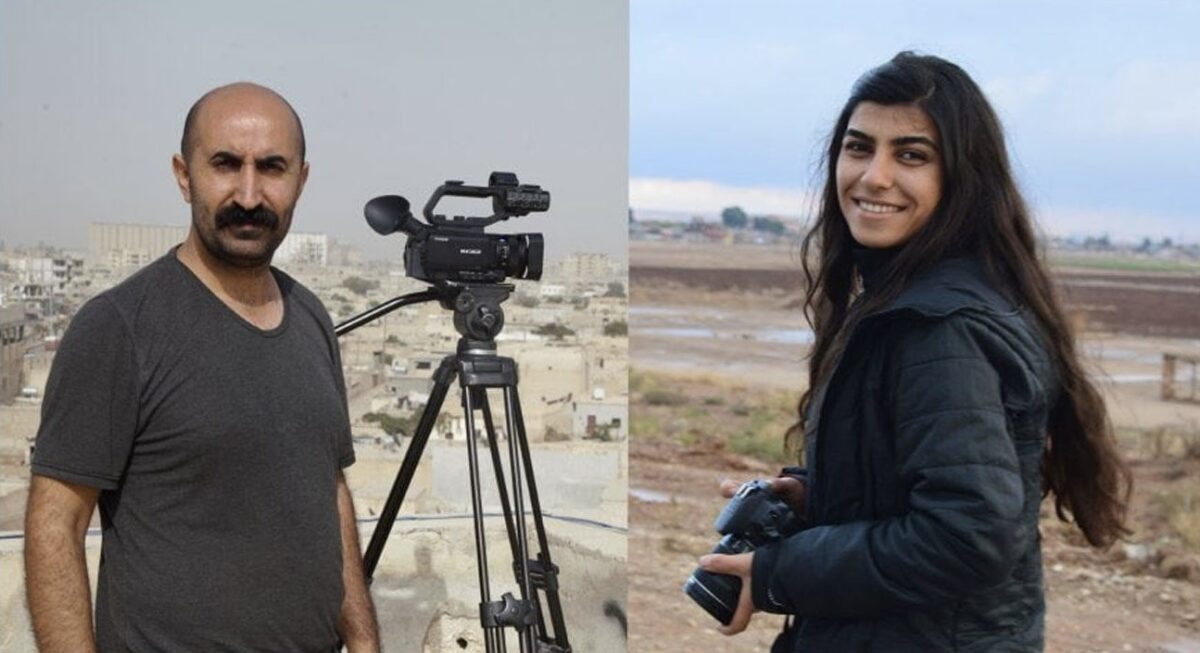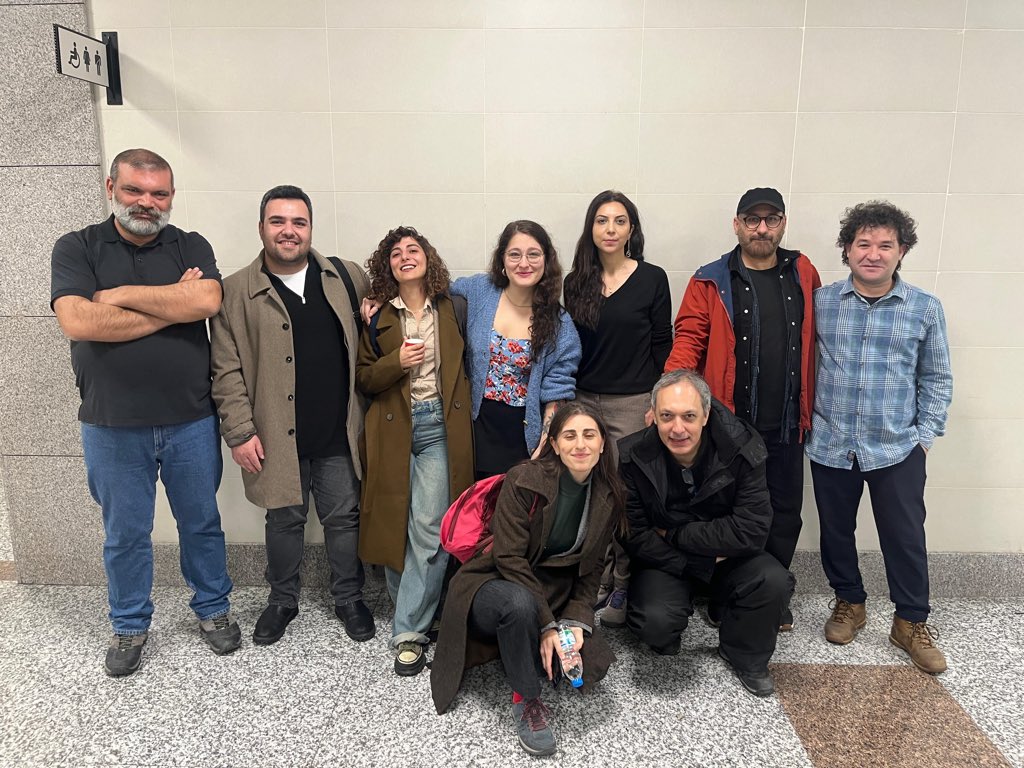Abducted from Lebanon: A story of fabricating a perpetrator

The Muş Court House | Picture Credit: Website of the Enforcement Office
Abducted from Lebanon: A story of fabricating a perpetrator
In July 2022, Anatolian Agency — the official news agency of the Turkish state— announced that a “blue-category wanted member of the Kurdistan Workers’ Party (PKK)” had been brought back to Turkey after an operation by the National Intelligence Organization (MIT). The person being referred to was Savaş Çelik claimed by the agency to be the fugitive perpetrator of the 2015 attack in the Malazgirt district of Muş against Gendarmerie Commander Major Arslan Kulaksız
Major Kulaksız was killed on July 27, 2015, in an armed attack targeting his vehicle. Following the incident, a large-scale operation was launched, and many people were detained. Çelik was among them, but after his statement was taken, he was released.
Shortly afterward, a new wave of operations began. Fearing another arrest and further torture, Çelik decided to leave the country. He crossed into Syria with his wife and six children. There, he enrolled his children in a school and started a business. After some time, they decided to move to Europe and planned to transit through Lebanon.
Çelik arrived in Lebanon with the help of an intermediary, but was detained shortly thereafter. Although authorities told his relatives that “there had been a misunderstanding and he would soon be released,” this did not happen. On April 24, Lebanese police handed over Savaş Çelik, blindfolded, to Turkish security officers at Beirut Airport.
Eighty-seven days of unrelenting torture
According to Savaş Çelik, he was placed on a private jet and remained blindfolded throughout the flight, sitting on the floor. He also reports being kicked and dragged across the floor. After being brought to Turkey, he was confined in an unknown location. There, for eighty-seven days, he was kept with his eyes continuously blindfolded and was subjected to systematic torture.
According to his lawyer Şule Recepoğlu, Çelik was beaten repeatedly, often to the point of losing consciousness. His hands and feet were bound with chains; he was electroshocked and subjected to severe sexual torture.
By the time he was handed over to the Counterterrorism Branch in Muş, he had lost 21 kilograms. His lawyers wanted to document the signs of torture before they disappeared, but a neutral doctor was not allowed to inspect him. Requests for referral to a hospital or to the Forensic Medicine Institute were denied.
As a result of this negligence, the lawyers filed a criminal complaint against the prosecutor. An investigation was subsequently opened, but this time, Çelik’s transfer to the hospital was delayed for months. In the end, the Forensic Medicine Institute reported finding no trace of torture but added: “The time elapsed since the alleged events must be taken into consideration.”
Where does Lebanon stand in this unlawful act?
These grave allegations of torture place Lebanon squarely at the centre of responsibility. When extraditing an individual to another country, Lebanon is obligated to act in accordance with international law and human rights principles. Under international law, “the principle of non-refoulement” is fundamental in extradition procedures, according to which a person cannot be extradited to a country where they would face the risk of torture, ill-treatment, denial of a fair trial, or death.
Speaking to The Amargi, Recepoğlu states that this is not a mere negligence but an act of deliberate complicity — a clear violation of international law. Therefore, the lawyers have filed a complaint with the United Nations (UN), citing both the allegations of torture and the procedural violations during the extradition process.
Turkey’s abduction policy and Lebanon’s stance on this matter are not new. Ayten Öztürk, who was alleged to be a member of a leftist organization, was detained at Beirut Airport on March 8, 2018, and was handed over to Turkey five days later. Öztürk was subjected to severe torture for six months in an undisclosed location.
Forgery in official documents
The irregularities can be traced back to the very beginning of the case — to the arrest report itself. The documents in the investigation file do not align with the official narrative. The arrest report dated July 20, 2022, states that Savaş Çelik was apprehended during an identity check at a roadside checkpoint. Because of this discrepancy, the defense filed a criminal complaint against the police officers, accusing them of falsifying official documents. The prosecutor’s office issued a decision of non-prosecution regarding the complaint.
Hundreds of statements, conflicting testimonies
The case against Savaş Çelik involves twelve defendants. The accused come from diverse backgrounds: individuals charged with membership of the PKK, local village guards, and an on-duty soldier. In other words, the case file includes both those who served on behalf of the state and those accused of belonging to an illegal organization. The only defendant being held in custody at the time of writing is Savaş Çelik.
Over the last three years, seventy-eight hearings have been held. In this time, three separate indictments against Çelik were accepted, and numerous new investigations were launched. The stated reason for his transfer to Turkey was his alleged involvement in the killing of Major Arslan Kulaksız and membership in a terrorist organization. However, the case file contains no concrete evidence linking him to any organizational activity. After his return to Turkey, new cases were opened and merged with the main trial, serving as the legal justification for his continued detention.
The first indictment: the Kulaksız murder
The first indictment against Savaş Çelik concerned the murder of Major Arslan Kulaksız. Although the Major’s wife was also in the vehicle during the attack, at no point did she identify Çelik and pointed to other individuals instead. The witness statements were also inconsistent — some mentioned one vehicle, others two; some said there were four assailants, others five. It was later revealed that several witnesses had given their initial statements under pressure.
According to lawyer Recepoğlu, the statements were pre-written and the contradictions were never corrected: “Some individuals later admitted that their statements about Savaş were not true. These names were brought forward to conceal the real perpetrators.”
Although the defense repeatedly requested that the victim’s wife be heard during the hearings, the court persistently refused to summon her.
The same incidents, new dates
In the second indictment, Savaş Çelik was held responsible for seven separate incidents from 2014–2015, including abduction, extortion, racketeering, and raids allegedly carried out on behalf of an organization. All of the accusations were based solely on statements taken during that period; no new investigation was conducted.
Except for two complainants, no one had filed a complaint against Savaş. These two individuals, however, had previous financial disputes with him. According to the defense, they later stated that they would be willing to withdraw their testimony “in exchange for money.”
The institutionalization of irregularities
The third indictment, as lawyer Recepoğlu describes it, “makes the previous ones seem almost mild in comparison.” This time around, the charges were based on recorded phone calls. Conversations with Savaş Çelik were interpreted as evidence of membership in an illegal organization; however, the people he spoke with were not charged as defendants—on the contrary, they were called as witnesses.
Recepoğlu comments, “Every time the possibility of Çelik’s release arose, new case files were opened. Indictments turned into tools to prolong his detention.”
Following the third indictment, new investigations were launched; some ended with non-prosecution decisions, while others were merged with the main case.
Courtroom notes
To understand how a trial that has lasted three years has been conducted, we attended the most recent hearing in Muş on October 10. The session began around noon. Çelik appeared via SEGBİS (Audio and Video Information System) from Erzurum Dumlupınar Type T Prison, standing in a narrow room with white walls.
One of the defendants, who was being tried without detention — a village guard chief — was also present. The most striking part of his testimony was this: “They burned me to save someone else. There are things I cannot talk about now.”
Lawyer Recepoğlu summarized seventy-eight hearings, listing the three indictments, their contradictions, and their legal violations. Highlighting that the case “cries out for Savaş Çelik’s innocence” after eighty-seven days of torture and three years of imprisonment, Recepoğlu said: “My client has been standing since the beginning of the hearing because, after eighty-seven days of torture, he still cannot sit for long periods.”
After the other defense lawyers requested additional time, the panel announced its decision: the court would wait for the forensic report, and Çelik’s detention would continue.
Rengin Azizoğlu
Rengin Azizoğlu is journalist and news editor based in Istanbul.



